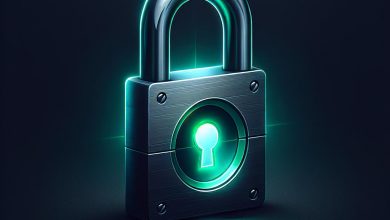Understanding Cold Wallets: The Safer Alternative to Hot Wallets and Anti-Malware Protection

Cold wallets, also called "cold storage," are a specific type of cryptocurrency wallet not connected to the internet. The primary purpose of a cold wallet is to provide enhanced security for digital assets. This is because they are immune to online threats such as viruses, hacks, and unauthorized access that plague internet-connected wallets, commonly known as hot wallets. Therefore, storing crypto assets in a cold wallet significantly reduces the risk of being compromised. Cold wallets are especially recommended for holding large amounts of cryptocurrency or digital assets that are not needed daily.
Table of Contents
Types of Cold Wallets: Hard Wallets and Paper Wallets
There are two major cold wallet categories: hardware and paper wallets. Hardware wallets resemble thumb drives and store your crypto keys digitally, crucially, offline. They allow you to trade cryptocurrency on a secure interface that keeps your keys away from the internet. However, you must connect the device to an internet-enabled device to perform transactions. On the other hand, paper wallets represent a more traditional, low-tech means of cold storage. They involve printing out your cryptographic keys on a piece of paper. These wallets are typically stored in safe, secure locations, providing additional physical security.
General Usage
A cold wallet is utilized similarly to a safe or lockbox. It is ideal for storing cryptocurrency you don't plan to access or use frequently. If you're trading regularly, your funds will be more accessible in a hot wallet. However, if you're buying and holding for the long term, a cold wallet is the safer option. While day-to-day crypto transactions occur in hot wallets, the bulk of an individual's assets should be kept in cold storage for safekeeping. To access your cryptocurrency, you must connect your hardware wallet to an online device or utilize your paper wallet while using caution to prevent theft or loss.
Safer Alternative to Hot Wallets
Hot wallets, while convenient for immediate access and frequent trading, are vulnerable to various online threats. Hosting your wallet on a device connected to the internet exposes your cryptocurrency to potential risks. These include hacking, malware attacks, and phishing attempts, among others. On the contrary, the fact that cold wallets are not dependent on the Internet for storage ensures a significantly higher level of security. Even though it might not offer the same level of convenience as hot wallets, the increased level of protection provided by a cold wallet ultimately compensates for any shortfall. This level of security makes a cold wallet an ideal choice for anyone serious about safeguarding their cryptocurrency assets.
Cold Wallet Creation Process
Using a cold wallet to secure your cryptocurrency involves specific processes. Despite the type of cold wallet in use, the process generally encompasses generating a cold wallet, transferring funds, ensuring secure storage, and utilizing the wallet in transactions.
Generating a Cold Wallet
Generating a cold wallet is creating a paper wallet or setting up a hardware one. You'd write down your private and public cryptographic keys on paper to generate a paper wallet. This process could be pretty complex, involving careful key generation and writing. On the other hand, setting up a hardware wallet acquired from trusted manufacturers like Trezor, Ledger, or Keep Key involves configuring the device per the provided instructions.
Transferring Funds to the Cold Wallet
Once the cold wallet has been set up, the next step is to transfer your cryptocurrency funds to it from your existing wallet. This process involves sending your currencies to the public address of your cold wallet. In general, it works the same as any other crypto transaction. However, you must ensure the address is correct to avoid losing your funds.
Secure Storage and Disconnection
Whether your cold wallet is paper-based or a hardware device, it is crucial to ensure its secure storage. For paper wallets, it means storing the paper in a safe and secure place away from potential hazards like fire, water damage, or theft. Hardware wallets involve safely storing the device when not in use. In either case, keeping your cold wallet disconnected from the internet when not needed helps further fortify your asset's security.
Utilization in Transactions
When you need to use the funds stored in your cold wallet with a hardware wallet, you must connect the device to an online device to initiate transactions. Regardless of the transaction, you must sign it off with your private key and then disconnect the hardware wallet once it is complete. For paper wallets, it means loading the wallet's private key into a necessary online platform for transactions and creating a new paper wallet as soon as the transaction is completed.
Cold Wallet Risks
Despite the high-security level offered by cold wallets, they are not entirely without risks. These hazards mainly arise from physical factors, mistakes during setup and use, and the potential for human error. It is crucial to be aware of these risks and take the necessary precautions when using a cold wallet.
Physical Damage or Loss
The physical nature of cold wallets makes them vulnerable to damage or loss. This is particularly true for paper wallets, which could be easily damaged by water or fire, and tricky wallets, which can be lost or stolen. Ensuring reliable backup measures, such as documenting and storing the recovery seed in a secure location, can mitigate these risks.
Seed Phrase Backup Risks
A cold wallet uses a recovery seed phrase, essentially a backup of the wallet's private keys. Sharing the seed phrase with others or losing it could lead to unauthorized access and potential loss of your cryptocurrency assets. Storing the seed phrase in a secure location and not sharing it helps to minimize this risk.
A Secure Initial Setup
A secure initial setup of your cold wallet is paramount to avoid risks associated with hacking threats such as malware or keyloggers. Setting up your wallet on a trusted, malware-free device is recommended. Double-checking and verifying all transactions before approval can help circumvent these kinds of threats.
Forgetting PIN or Password
Forgetting your PIN or password can lock you out of your cold wallet, making it impossible to access your funds. Some hardware wallets have built-in security measures to protect against brute-force attacks in case of forgotten PINs or passwords by erasing the wallet's data after a certain number of wrong attempts. To mitigate this risk, adopt secure methods to remember your PIN or password without compromising safety.
Human Errors
Human errors, such as mistakes during the generation, printing, and setup of your cold wallets, can lead to loss or theft of your cryptocurrency. Care and precision during these processes are crucial to mitigate these risks. It can also be helpful to double-check all information throughout the setup and transaction processes and to follow all guidelines and instructions provided by the wallet provider.
Dedicated Security Solutions
As the engagement with cryptocurrencies and digital assets continues to rise, so does the need for robust security measures. To this effect, anti-malware companies are developing solutions to offer heightened security for cryptocurrency and NFT wallets.
A dedicated security solution can fortify cryptocurrency wallets against security threats as it identifies and alerts users of any suspicious activity pertaining to their cryptocurrency wallets. By doing so, they offer protection against popular cryptocurrency and NFT scams and safeguard your wallets.
Some security solutions have already been integrated into the SecuX W20 Cold Wallet for enhanced security. Thus, your assets are still secured even when the cold wallet is connected to the internet for transactions. Thus, while you can carry out transactions as per their requirements, maintaining the security of the assets is handled by a particular anti-malware solution.
The latter can also protect against common scams and phishing activities related to cryptocurrencies. Additionally, they employ advanced cybersecurity technology to defend against malicious hacker attacks, ensuring the user's digital currency and assets remain untarnished.




